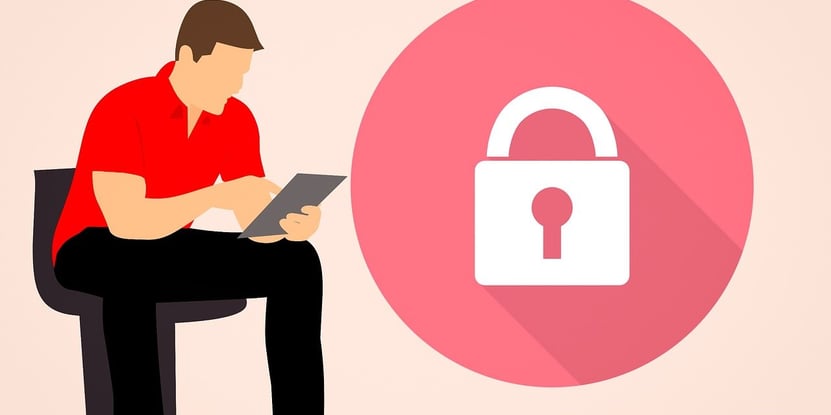Cybersecurity for Small Businesses: Essential Tips
Small businesses are increasingly becoming targets for cybercriminals. While large enterprises often make headlines for data breaches, small businesses are not immune to cyber threats. In fact, they are frequently targeted due to perceived vulnerabilities and lack of robust security measures. Protecting your small business from cyber threats is critical to ensuring its longevity and success. This blog provides essential tips for small businesses to enhance their cybersecurity posture.
CYBER SECURITY
6/12/20243 min read


Understanding the Threat Landscape
Small businesses face a range of cyber threats, including:
Phishing Attacks: Fraudulent emails or messages designed to trick employees into revealing sensitive information.
Ransomware: Malicious software that encrypts data and demands a ransom for its release.
Malware: Software designed to disrupt, damage, or gain unauthorized access to computer systems.
Insider Threats: Risks posed by employees or contractors who may intentionally or unintentionally cause harm.
Data Breaches: Unauthorized access to sensitive business information, such as customer data or financial records.
Essential Cybersecurity Tips for Small Businesses
Implement Strong Password Policies
Complex Passwords: Ensure that employees use complex passwords that combine letters, numbers, and special characters. Avoid common words and easily guessable passwords.
Regular Updates: Require employees to change their passwords regularly and avoid reusing passwords across multiple accounts.
Multi-Factor Authentication (MFA): Implement MFA to add an extra layer of security, requiring employees to verify their identity through multiple methods.
Conduct Regular Employee Training
Phishing Awareness: Educate employees about phishing attacks and how to recognize suspicious emails, links, and attachments.
Security Best Practices: Train employees on security best practices, such as avoiding public Wi-Fi for work-related tasks and recognizing social engineering tactics.
Incident Reporting: Encourage employees to report any suspicious activities or potential security incidents immediately.
Keep Software Up-to-Date
Patch Management: Regularly update and patch all software, including operating systems, applications, and antivirus programs, to protect against known vulnerabilities.
Automated Updates: Enable automated updates where possible to ensure timely application of security patches.
Secure Your Network
Firewalls: Use firewalls to block unauthorized access to your network and monitor incoming and outgoing traffic.
Encryption: Implement encryption for sensitive data, both at rest and in transit, to protect it from unauthorized access.
Network Segmentation: Segment your network to limit access to sensitive information and reduce the impact of a potential breach.
Backup Your Data
Regular Backups: Perform regular backups of critical data and ensure backups are stored securely, either offsite or in the cloud.
Testing Restores: Periodically test your ability to restore data from backups to ensure they are functional and up-to-date.
Ransomware Protection: Ensure your backup strategy includes protection against ransomware, so you can restore data without paying a ransom.
Develop an Incident Response Plan
Preparation: Create a comprehensive incident response plan that outlines steps to take in the event of a cyber attack.
Roles and Responsibilities: Clearly define roles and responsibilities for employees during an incident.
Regular Drills: Conduct regular drills to test the effectiveness of your incident response plan and make improvements as needed.
Use Antivirus and Anti-Malware Software
Comprehensive Protection: Install reputable antivirus and anti-malware software on all devices to detect and remove malicious threats.
Regular Scans: Schedule regular scans to check for malware and other threats, ensuring your systems remain clean.
Control Access to Sensitive Information
Least Privilege Principle: Grant employees access to only the information and systems they need to perform their jobs.
Access Controls: Implement strong access controls, such as user authentication and role-based access, to protect sensitive data.
Monitoring: Regularly monitor access logs to detect and respond to unauthorized access attempts.
Secure Mobile Devices
Mobile Device Management (MDM): Implement MDM solutions to manage and secure mobile devices used for work purposes.
Encryption and Passwords: Ensure mobile devices are encrypted and protected with strong passwords or biometric authentication.
Remote Wipe: Enable remote wipe capabilities to erase data from lost or stolen devices.
Partner with Security Experts
Consultation: Consider partnering with cybersecurity experts or managed security service providers (MSSPs) to enhance your security posture.
Audits and Assessments: Regularly conduct security audits and assessments to identify and address vulnerabilities in your systems.
Conclusion
Cybersecurity is a critical concern for small businesses. By implementing these essential tips, small businesses can significantly enhance their security posture and protect against a wide range of cyber threats. While the task of securing your business might seem daunting, taking proactive steps today can prevent costly and damaging incidents in the future. Remember, cybersecurity is an ongoing process that requires vigilance, regular updates, and continuous education. By fostering a culture of security within your organization, you can ensure your business remains resilient in the face of evolving cyber threats.
Cyber Guard Forte
